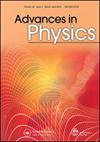Unconventional density waves and superconductivities in Fe-based superconductors and other strongly correlated electron systems
IF 13.8
1区 物理与天体物理
Q1 PHYSICS, CONDENSED MATTER
引用次数: 9
Abstract
In this article, we review the recent significant progress in the theoretical studies of the electronic states by mainly focusing on Fe-based and cuprate superconductors. These superconductors are “unconventional” in that strong electron-electron correlation mediates the pairing; they are different from conventional phonon-mediated BCS superconductors. To seek the high- pairing mechanism, many scientists have focused on the mysterious spontaneous rotational symmetry breaking above , such as nematic order at and smectic order at . Such exotic correlation-driven symmetry breaking in metals has become a central issue in condensed matter physics. We demonstrate the emergence of the nematic and smectic orders due to orbital polarization ( ) and the symmetry breaking in the correlated inter-site hopping (= bond order ) in Fe-based and cuprate superconductors. In addition, we discuss exotic spontaneous loop current orders driven by the pure imaginary . These interesting “unconventional density-waves” originate from the quantum interference between different spin fluctuations that is described by the vertex correction (VC) in the field theory. In the next stage, we discuss electron-correlation-driven superconductivity due to the fluctuations of unconventional density-waves. For this purpose, we suggest the beyond-Migdal–Eliashberg gap equation by including the VCs into the equation. In Fe-based superconductors, high- s-wave superconductivity can be mediated by nematic and smectic fluctuations because the pairing interaction is magnified by the VCs. We also discuss the multipolar fluctuation pairing mechanism in heavy fermion systems, owing to the cooperation between the strong spin-orbit interaction and the strong electron correlation. To summarize, we suggest that the quantum interference mechanism described by the VCs plays essential roles in not only various unconventional density-waves but also exotic superconducting states in many strongly correlated metals. We finally discuss some interesting future issues with respect to the quantum interference mechanism.铁基超导体和其他强相关电子系统中的非常规密度波和超导性
本文综述了近年来电子态理论研究的重要进展,主要集中在铁基和铜酸盐超导体上。这些超导体是“非常规的”,因为强的电子-电子相关性介导了配对;它们不同于传统的声子介导的BCS超导体。为了寻找高配对机制,许多科学家将注意力集中在神秘的自发旋转对称性破缺上,如向列有序at和近晶有序at。这种奇异的相关性驱动的金属对称性破坏已经成为凝聚态物理学的核心问题。我们证明了在铁基和铜酸盐超导体中,由于轨道极化()和相关位点间跳跃(=键序)的对称性破坏,向列和近晶序的出现。此外,我们还讨论了纯虚数驱动的奇异自发回路电流阶数。这些有趣的“非常规密度波”源于场论中的顶点校正(VC)所描述的不同自旋波动之间的量子干涉。在下一阶段,我们将讨论由于非常规密度波的波动引起的电子关联驱动的超导性。为此,我们提出了超越Migdal–Eliashberg间隙方程,将VC纳入该方程。在铁基超导体中,高s波超导性可以由向列和近晶波动介导,因为VC放大了配对相互作用。我们还讨论了重费米子系统中的多极涨落配对机制,这是由于强自旋轨道相互作用和强电子关联之间的协同作用。总之,我们认为VC所描述的量子干涉机制不仅在各种非常规密度波中发挥着重要作用,而且在许多强相关金属中也发挥着奇异超导态的作用。最后,我们讨论了关于量子干涉机制的一些有趣的未来问题。
本文章由计算机程序翻译,如有差异,请以英文原文为准。
求助全文
约1分钟内获得全文
求助全文
来源期刊

Advances in Physics
物理-物理:凝聚态物理
CiteScore
67.60
自引率
0.00%
发文量
1
期刊介绍:
Advances in Physics publishes authoritative critical reviews by experts on topics of interest and importance to condensed matter physicists. It is intended for motivated readers with a basic knowledge of the journal’s field and aims to draw out the salient points of a reviewed subject from the perspective of the author. The journal''s scope includes condensed matter physics and statistical mechanics: broadly defined to include the overlap with quantum information, cold atoms, soft matter physics and biophysics. Readership: Physicists, materials scientists and physical chemists in universities, industry and research institutes.
 求助内容:
求助内容: 应助结果提醒方式:
应助结果提醒方式:


